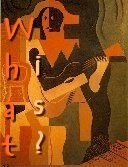| News Guides Performances What Is Music? | ELLOPOS | ||||
|
MARIA G. AMILBURU Kierkegaard's aesthetic
realm of existence |
|||||
| From: Maria G. Amilburu, Understanding Human Nature: Examples from Philosophy and the Arts, http://www.bu.edu/wcp/MainAnth.htm | |||||
As we might expect, Kierkegaard does not describe the features of the aesthetic existence in systematic treatise form, but rather sketches them out in the course of his pseudonymous works by describing characters who embody this way of life. (4) Of all of them it is the figure of Don Juan — as he is depicted in the European literary tradition and above all as he is brought alive in Da Ponte's libretto for Mozart's Don Giovanni — who is the paradigmatic incarnation of this stage of existence. Kierkegaard maintains that Don Giovanni has all the exuberance and primitive impulse of man before self-awareness has dawned: he lives for the inmediate satisfaction of his senses, and is the embodiment of the kind of person who can only see him/herself in terms of the senses. Living for the moment entails a negation of the ability to reflect, which is characteristic of the spirit. This means that Don Giovanni lacks inner life: he simply enjoys himself, flits from one pleasure to another, one conquest to another, as Leporello tells us in his Aria. His life is a flow, but without a flowing subject. It is like the bubbles in the wine which gives its name to another of the best-known pieces of the Opera. The aesthetic existence is thus an inconsistent kind of phenomenon which wafts here and there in an evanescent world. This is why Kierkegaard says that the best way of expressing the levity of the aesthetic existence is through music: pure experience which only exists in the present. On the basis of Kierkegaard's descriptions of characters who live in the aesthetic stage, we can attempt a more systematic formulation of the features which he attributes to this sphere of existence. The first point concerning this initial stage is its universality: everyone has at some time been in it, but not everyone has managed to get beyond it. The aesthete prolongs his stay in the ignorance or unconsciousness — which is the state that all human beings are born to — , letting himself be carried along by events without taking any decisions about the kind of life he want for himself. During the aesthetic stage, human actions are not based on reason: indead, the person involved launches himself into action without reflecting. This means that one of the characteristics of the aesthetic stage is vacuity, the senselessness of living on the very surface of things without internalising one's actions or awareness of one's own subjectivity. Estheticism is not a superficial manifestation: it is manifest superficiality. It consists of living for the moment, frivolously and randomly, as there is no deep reason prompting one's actions even thought at root the driving force behind this way of existing is the lust for pleasure. Hedonism and enjoyment are the features most properly associated with the aesthetic stage. In it, the individual does not allow any kind of restrain to limit him, and he only heeds the fleeting imperatives of his lust for pleasure, which send him in perpetual pursuit of fresh sensations. This means that the aesthete is someone who needs to keep changing activity, and he can only derive pleasure from things which still hold the glamour of the new. But the time comes when his capacity for enjoyment is blunted by the emotional whirpool that always surrounds him, and as he seeks ever more intense sensations to quench his thirst for enjoyment, he becomes inured to the simple joys of everyday life. (5) Kierkegaard describes the vertigo which aesthetes experience in the following words: "Let us look as how they fling themselves from one pleasure to another: their password is variation. Do they desire something that is always the same? On the contrary, they want something that is never the same. In other words, they desire many diffrenet things, and he who wants in these circumstances is not only innerly dispersed, but also divided. He desires one thing, and then yearns for the opposite, since the unity of pleasure is a chimera and an illusion: his aim is diversity of delights. When someone has pleasure at his service, he goes calling for something new: change, movement, variation". (6) As a result, the aesthetic life is linked to the present, to the moment. If pleasure is felt, it is in the here and now. "The best expression of the aesthetic existence comes down to saying that it lies in the moment", (7) Kierkegaard concludes. So, when pleasure is what someone wants, delay makes no sense. In this situation there is always anxiety. This can turn into the force which produces the impulse needed to trigger the formation of the self; but it can also produce fear, in which case the aesthete may prefer to remain as he is. Among the different ways the aesthete has of fleeing or ignoring this anxiety, Kierkegaard mentions the following: submerging oneself in the activities of everyday life, chasing after entertainment and distractions, reducing all events to the level of imagination and memory, pursuing whims, trying to relive happy experiences, and irony. However, none of these stratagems can fend off the underlying anxiety, which undermines the aesthetic approach to human existence and its values. The aesthetic stage meets with defeat in the form of despair: the person who lives at this level is desperate, whether he/she knows it or not, and regardless of any attempt to conceal it. We can conclude by saying that Kierkegaard's view of aesthetics as a way of life is that it consists of a kind of scattering of the self through a lack of interior life and self-awareness. This dispersal is also reflected in the way that Kierkegaard does not formulate a single human archetype who is the embodyment of it, but presents an array of characters: the sensuality of Don Juan, the fantasy of John the Seductor, and the despair of Ahasverus are the steps in a process which starts in sensuality and culminates in despair. Notes (4) Cfr. KIERKEGAARD, L'Alternative, part I: specially Diapsalmata, Les stades inmédiats de l'Eros ou l'Eros et la musique and Le journal du seducteur, and part II: L'equilibrie de l'esthetique et de l'ethique dans la formation de la personalité, vols. 3 - 4; Les stades sur le chemin de la vie, part I: In vino veritas, vol. 9; and La répétition, vol. 5. (5) Kierkeggard does not reduce the aesthetic attitude to pure sensuality. The aesthetic existence encompasses all attitudes which are directed exclusively towards pleasure, even if this is noble and purelly intellectual. Enjoying ideas or delighting in intelligible landscapes is not very different from the pursuit of sensual pleasures, as it amounts to considering that satisfaction is the ultimate objective of one's actions. From the moment when they coincide on a major point -the conception of life- what distinguishes them is secondary. Cfr. L'Equilibrie de l'esthetique et de l'ethique dans la formation de la personalite, vol. 3, p. 164. (6) KIERKEGAARD, S., Un discours de circunstance, vol. 13, p. 30 (7) KIERKEGAARD, S., L'Equilibrie ..., p. 207. Reference address of this text: https://www.ellopos.net/music/library/kierkegaard-dongiovanni.html"What is music?" home address: https://www.ellopos.net/music/library/ |
|||||
|
|
|||||

